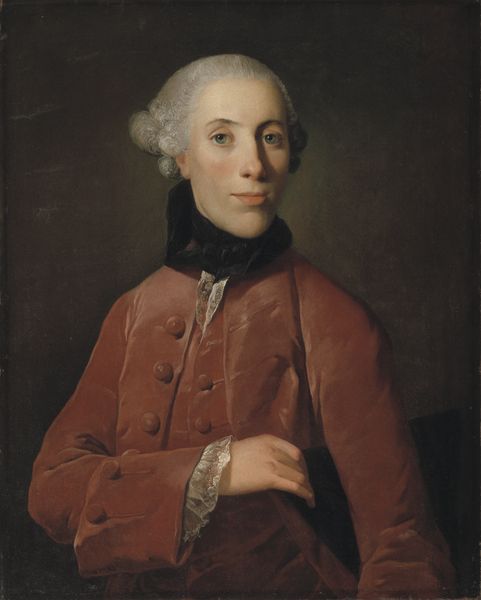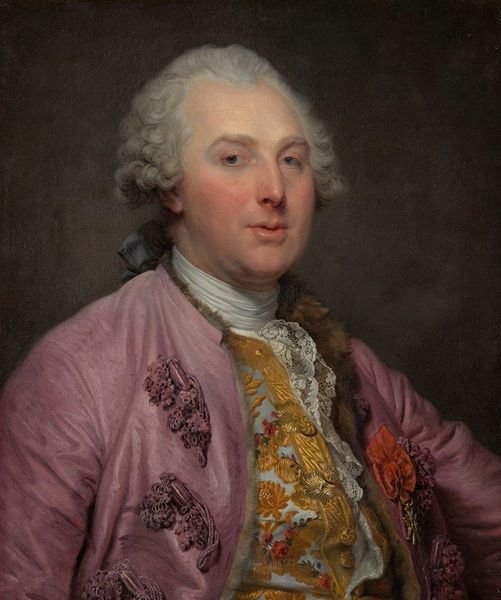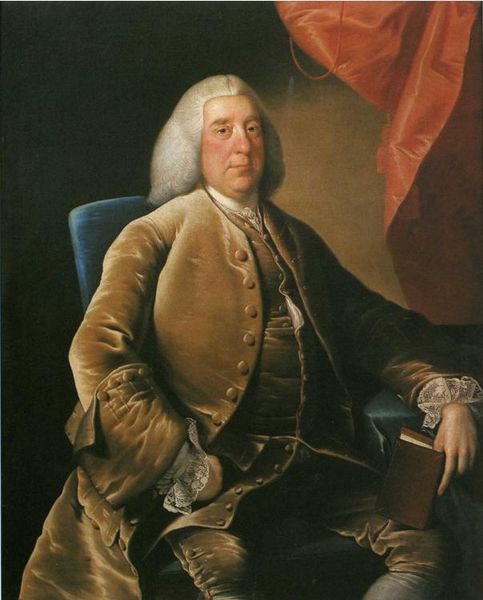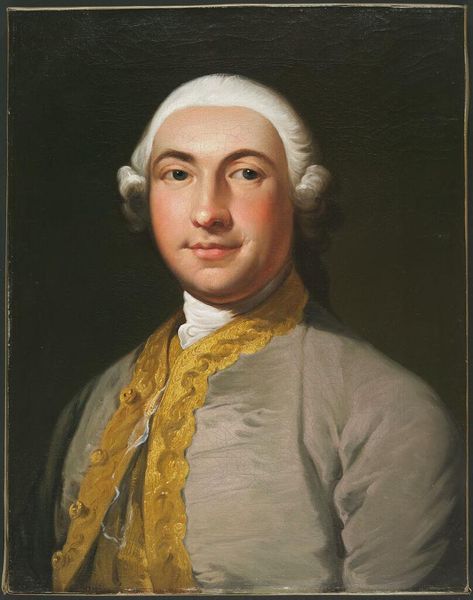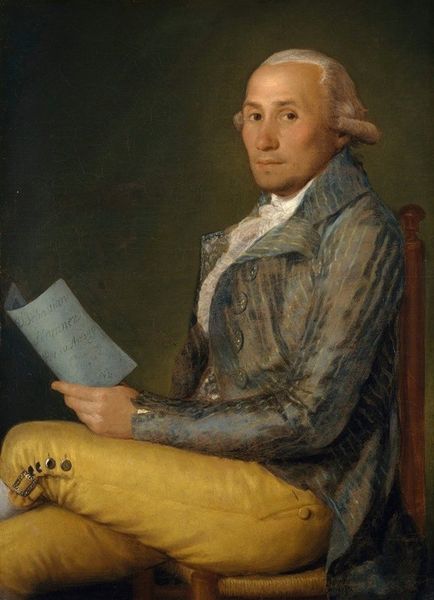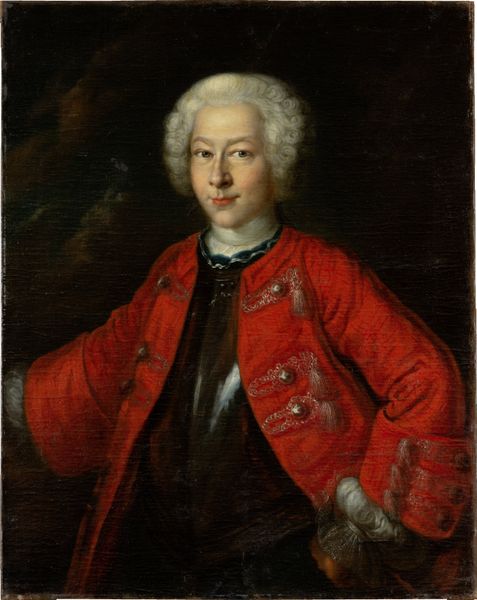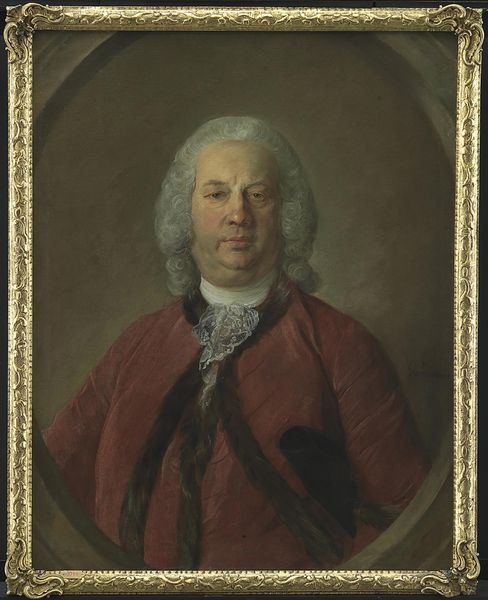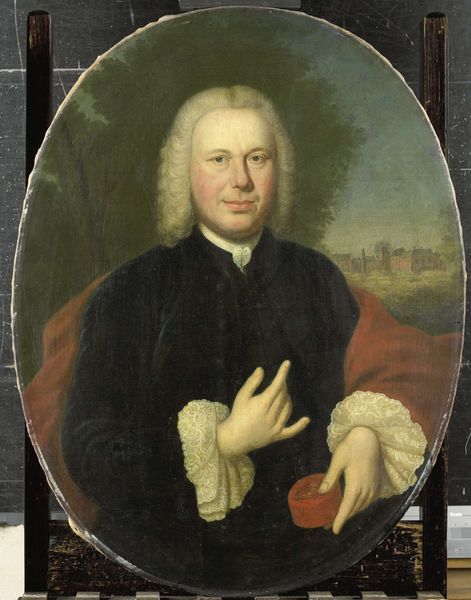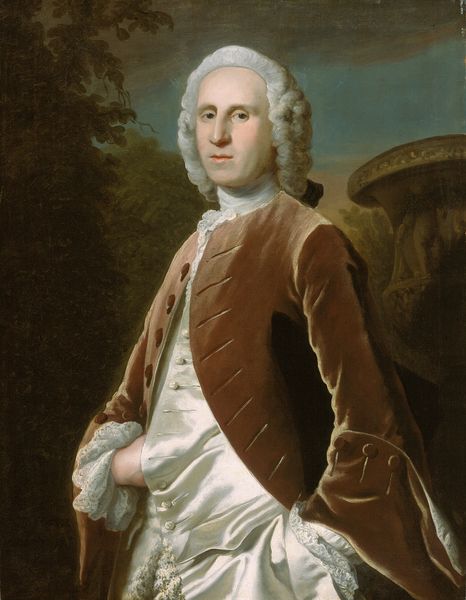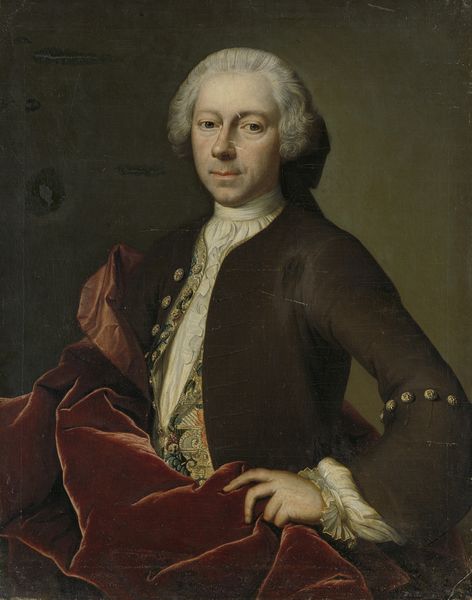
Copyright: Public Domain: Artvee
Jens Juel painted this portrait of Lauritz Christian Steen in Denmark, most likely during the late 18th century. Juel was the leading portrait painter of the Danish Golden Age. Here, we see Steen posed with the accoutrements of wealth and status. The velvet jacket, powdered wig, and the papers on the desk all signify Steen's position in society. But what does it mean to produce an image like this? Portraiture in this period served to reinforce social hierarchies. By commissioning a portrait, Steen was participating in a cultural practice that confirmed his own importance and solidified the existing social order. To fully understand the painting's function, we need to consider the institutions that supported it. The art world of 18th-century Denmark was shaped by the Royal Danish Academy of Fine Arts. Further research into the history of the Academy and the patronage system would reveal much about the social conditions that shaped artistic production at this time.
Comments
No comments
Be the first to comment and join the conversation on the ultimate creative platform.


